Art World
How the New Chelsea Skyscraper From Real Estate Developer Ziel Feldman Was Influenced by His Art Collection
Feldman’s new Bjarke Ingels-designed building, the XI, features a public gallery.
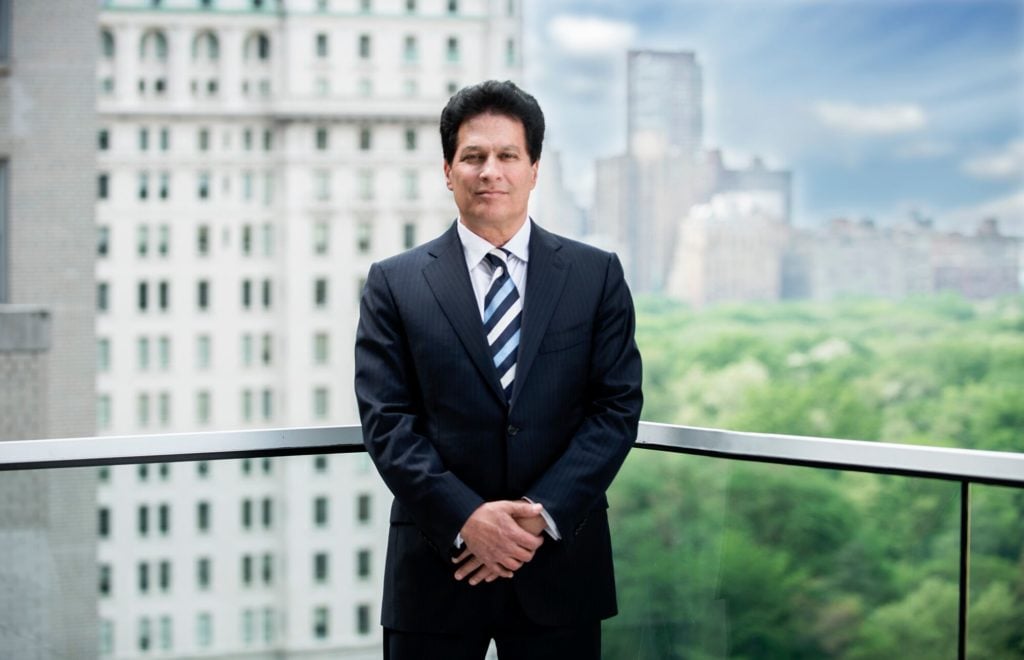
Feldman’s new Bjarke Ingels-designed building, the XI, features a public gallery.

In Partnership with The XI

The New York City skyline wouldn’t look the same today without Ziel Feldman. Chairman and Founder of HFZ Capital Group, a real estate investment and development company launched in 2005, Feldman has overseen the production of some of the most prominent buildings erected in the city over the course of the last decade-plus, including the Marquand at 11 East 68th Street, the Halcyon at 305 East 51st Street, and One Madison Park.
Partnering with star architects such as David Chipperfield and Robert A. M. Stern, his buildings are, indeed, works of art themselves. Yet, they often house even more art on the inside.
Feldman is also a major art collector. Alongside his wife Helene, he has amassed an impressive collection of works by big-name contemporary artists over the last 25 years. From Anselm Kiefer and Louise Nevelson to Ugo Rondinone and Tracy Emin, its contents read like a Sotheby’s fall catalogue. Many of these works hang in the halls of his buildings, in spaces that could rival the walls of local galleries. It’s a point of pride for the developer, who aims to create spaces that are as inspirational as they aspirational.
Then there’s HFZ’s newest building, the XI, which is literally part gallery. Occupying a full square block in Chelsea between the Hudson and the High Line, the XI, designed by renowned architect Bjarke Ingels, takes the form of two twisting structures rising from the ground in a spiral, as if dancing together. The building tapped Es Devlin—a British sculptor and installation artist known for creating stages for artists like Beyoncé and Adele and sets for Olympic ceremonies—to design a permanent gallery with a series of site-specific designs, including a model of Ingels’s design, and a massive, egg-shaped map of Manhattan. The gallery, located at the XI’s 12th street entrance, is free and open to the public.
Surrounded by a George Condo painting, a Gimhongsok sculpture, and many other works, Feldman recently sat down with artnet News at HFZ’s headquarters to discuss the XI and how his practice as a collector influenced his work in real estate.
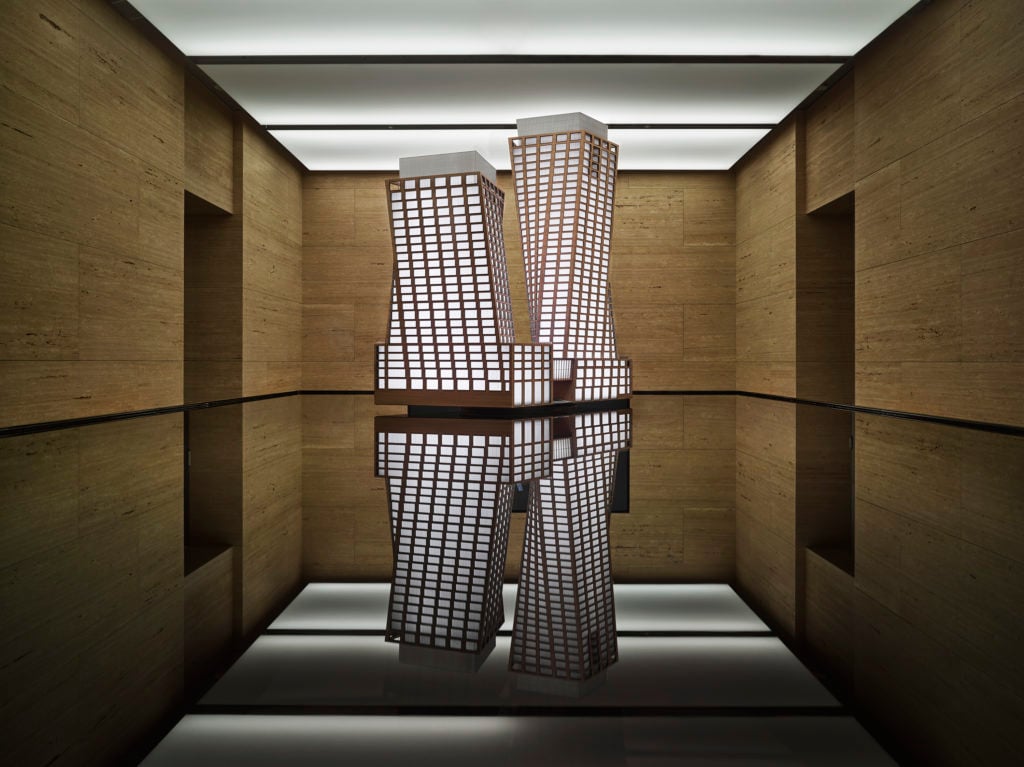
Es Devlin, Dance (2018). Courtesy of the XI. Photo: Photo: Nikolas Koenig.
When did you first start collecting art?
My wife Helene and I have been passionate about collecting art for a long time now. It was originally inspired by our travels. We could collect objects from places we visited around the world. At that point, art was a function of remembering where we went. It was better than a picture; it was a way of bringing us back to the place where we purchased it.
My wife and I were both lawyers then. I specialized in real estate. Early on we were attracted to African art and European antiquities, as we spent a lot of time on those two continents. The objects we collected always had some connection to history; that’s what would really attract us. It informed our travels too.
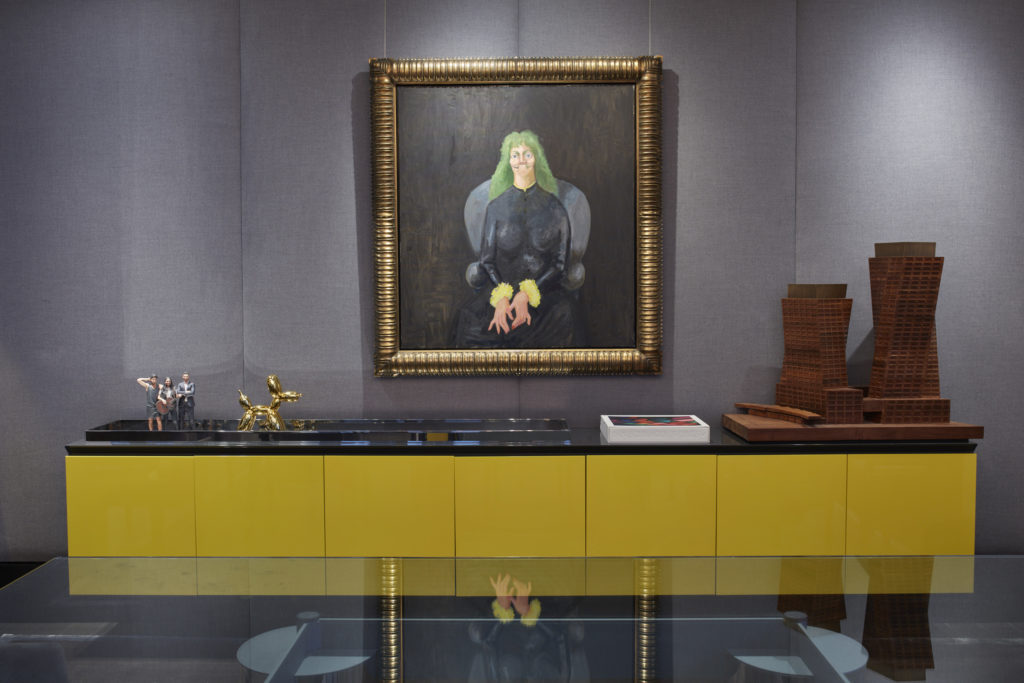
George Condo, Girl with Green Hair (2009). Courtesy of Ziel Feldman.
How has your collection evolved since then?
As I became a developer, we moved into collecting art more as a thing of beauty and focusing on emerging artists. For me, it was like designing buildings, in a way. Artists tend to be frustrated developers and architects, and architects think they’re artists. Developers, we think we’re all of those things.
My original portfolio was a lot of walk‑ups around the New York area. Then it blossomed into being pre‑war buildings and hotels—again, I was attracted to the history. Eventually, it grew to include brand new buildings as well. It’s a combination of building ground‑up towers and reinvesting in older, historic buildings. Everything we do has to have some kind of special architectural significance, be it the building or the location.
We tend to locate ourselves on parks, on bodies of water, on corners—places that have an abundance of light. These are the same things that inspire artists. The Hamptons are a great example—so many of the best contemporary artists have practiced out there because of the light and the landscape. We have that same view of how people should live in an urban setting. For example, a current project of ours, the XI—it’s on a body of water, surrounded by parks and the High Line.
Artists are inspired by the same things that inspire us in our buildings. We’ve found that consumers want to live or work in places that inspire. That’s why, at our offices, we try to keep artwork that inspires people, makes them happy. I think there’s a theme that flows through—from what we try to do here at HFZ to my own personal life—wherein we’re constantly creating visual and sensory experiences that hopefully are pleasant. We don’t collect just to sell.
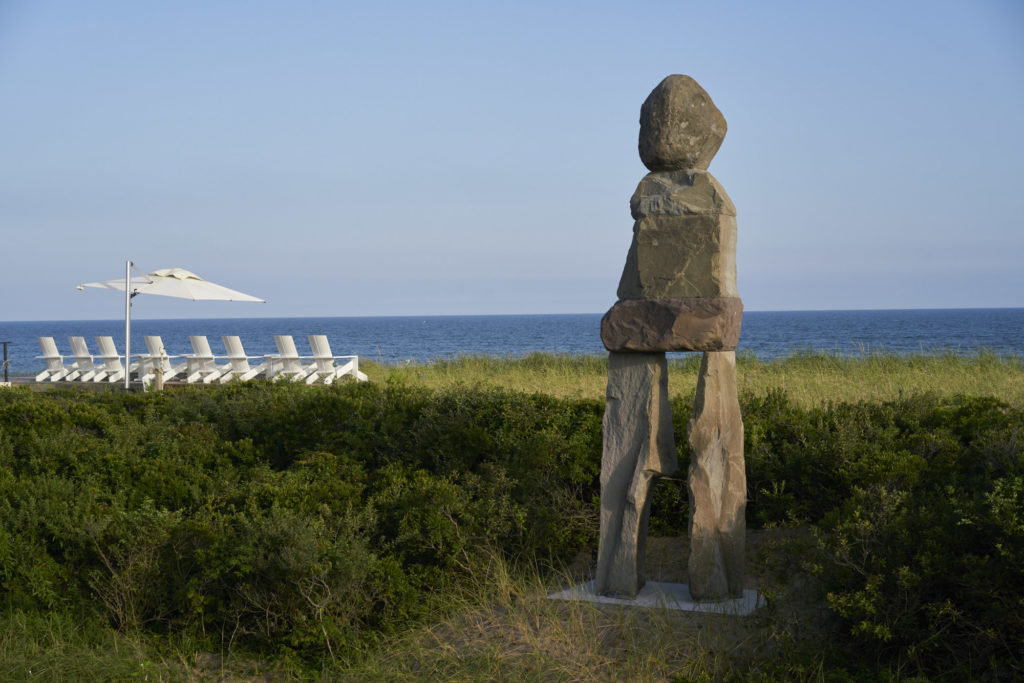
A special commission by Ugo Rondinone (2017). Courtesy of Ziel Feldman.
Can you tell me about some of your favorite pieces in the collection and what you were drawn to in looking at them or acquiring them?
On a personal level, we have a few homes. One is out in the Hamptons, where we wanted to create a Zen‑like environment where you escaped from the day to day chaos of the city. So we chose to house our Yoshitomo Nara sculpture there. Nara is a well‑known Japanese artist that often disappears for months at a time to meditate. The sculpture sits at the entrance of our home; it sets the tone.
Along that same line, we have a custom piece by Ugo Rondinone. We first saw his work about five years ago when he installed his stone figures in front of Rockefeller Center. We commissioned him to put one on our dune outside the Hamptons house. We wanted to capture the natural environment that surrounds the place. This one is constructed from blue stones so it looks like it’s almost emerging out of the earth.
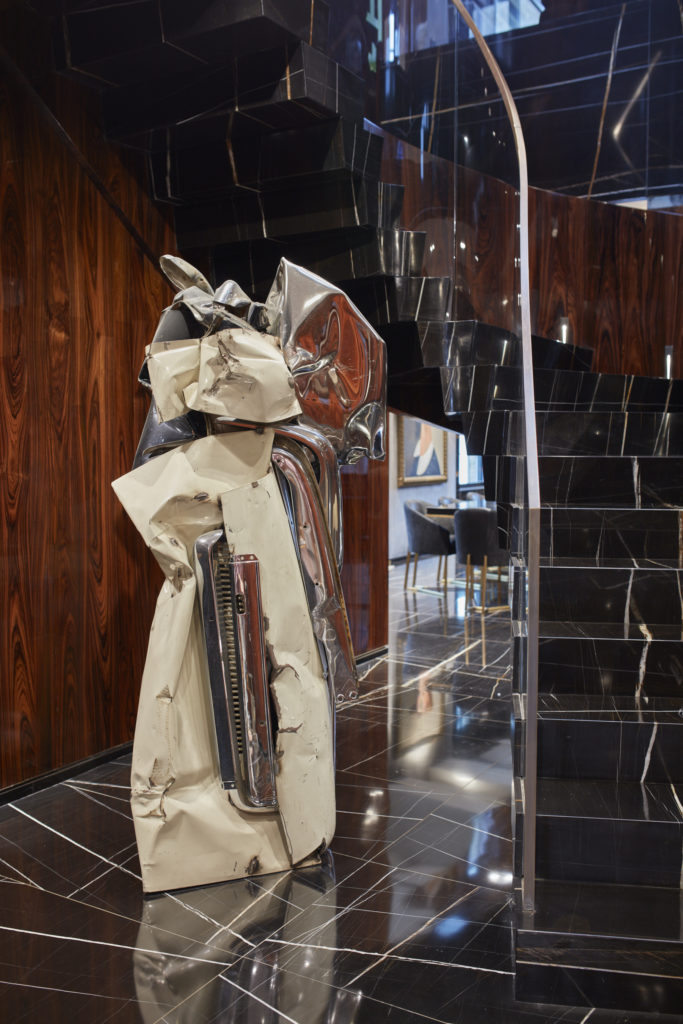
John Chamberlain, Galileoapogee. Courtesy of Ziel Feldman.
Artists haven’t always had a harmonious relationship with the world of real estate development, especially in New York. Do you see these two better co-existing in the future?
That hasn’t been the case from my perspective. In fact, in my experience, the two are quite harmonious. In each of our respective professions, you have to be an artist of sorts. It’s no longer a secret that real estate and art kind of sell each other. People who are passionate about real estate and architecture also tend to be passionate about art.
I think about the new movie, “The Price of Everything.” In it, [someone] says, “If the artist ends up as lobby art he’s doomed.” We actually find that artists love to put their work on our walls, depending on what lobby it is and who is seeing it. It’s an honor for artists to be showing within anything that resembles a museum and lobbies in real estate today try to mimic those experiences.
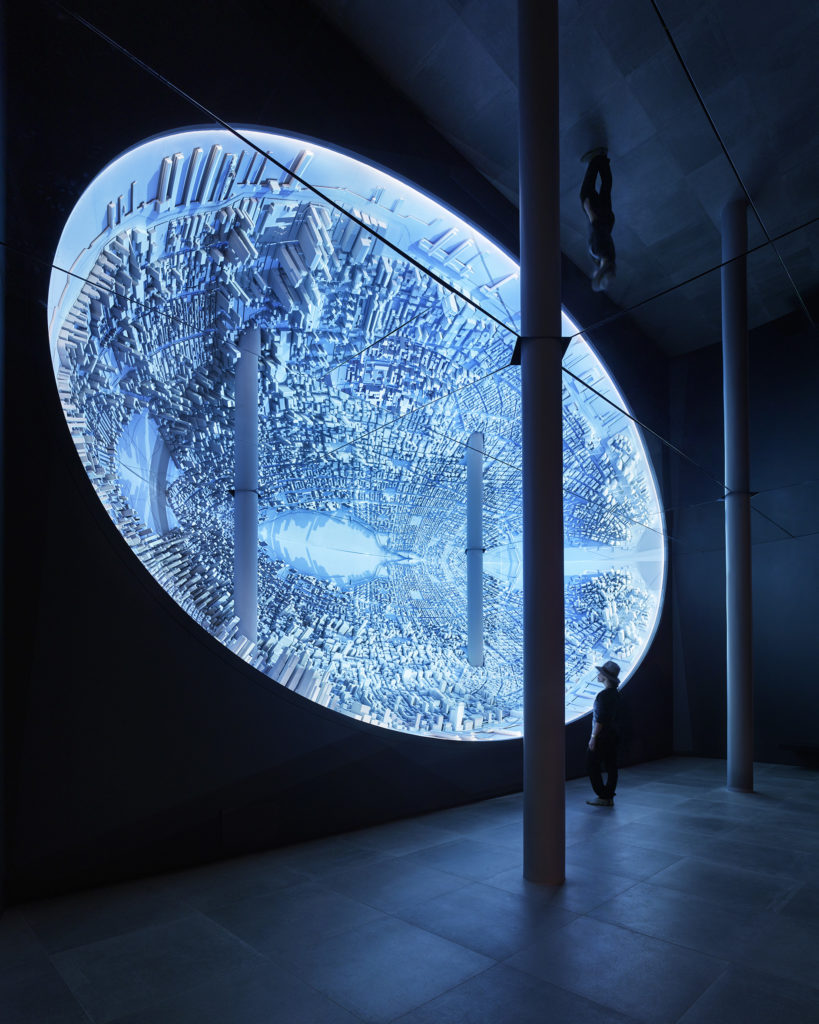
Es Devlin, Egg (2018). Courtesy of the XI. Photo: Nikolas Koenig.
I wanted to ask you about that too. There’s a newer trend in development right now where buildings are created with art in mind. The XI, feature a public gallery and permanent installations, is emblematic of this. When did you notice this movement and why have you chosen to embrace it with buildings like the XI?
It starts with architecture. A developer begins with a blank canvas like an artist. What they put on that canvas is dictated by what they’re feeling and—in a more cynical way—what they think will sell. As a developer, we want to create environments but we’re ultimately selling something, so it becomes a question of how do you get into the consumer’s head and learn what the best use for this canvas is? In real estate it could be an office, it could be a hotel, it could be retail, it could be an apartment—it’s really open for interpretation. It’s no different than when a painter plots out a canvas that’s thought-provoking and elicits emotion. Real estate is a little more specific in that you’re living within this environment that’s being created for you, but the guy who’s creating it for you is trying to guess what the best way for you to live there is.
At the XI in West Chelsea, we’re creating an environment that touches on a little bit of everything. We have the Six Senses Hotel, which, as its name suggests, engages all six senses. The buildings themselves are sculpture; they’re a piece of art. The two are 400 feet high—the tallest buildings in the neighborhood—but they don’t compete for space; they’re dancing with each other. It’s an absolute sculpture. The buildings are coming along nicely and make a dramatic impression when you see them from the High Line. To help buyers further understand the XI, we created an exhibition space in the Meatpacking District called the Visionaries Gallery. At the entrance of the gallery is a fantastic installation by Es Devlin, an artist who is probably best known for creating sets for U2, Beyoncé, and Adele, among many others. She has created her first site-specific works in New York, an inverted model of the city in the shape of an egg and two other installations.
We’re also building an office building on 29th and 5th designed by Bjarke Ingels, where every floor of the building has outdoor space. The whole thing is column‑free; it’s all glass and high ceilings. It has amenities like you would in a hotel or in your home. We’re discovering that people want to work and live among the kinds of luxuries that come with a hotel. All of this is merging together now as a comprehensive experience.
In some ways I think it’s related to the millennial generation: Younger people seek immediate gratification. Information is no longer proprietary; it’s free-flowing everywhere, and we all have it. It is a great equalizer, in a sense, but because we all have it, it also has created an environment where we want everything all the time. As a developer, you have to anticipate those trends and try to create spaces that foster that experience as much as possible.
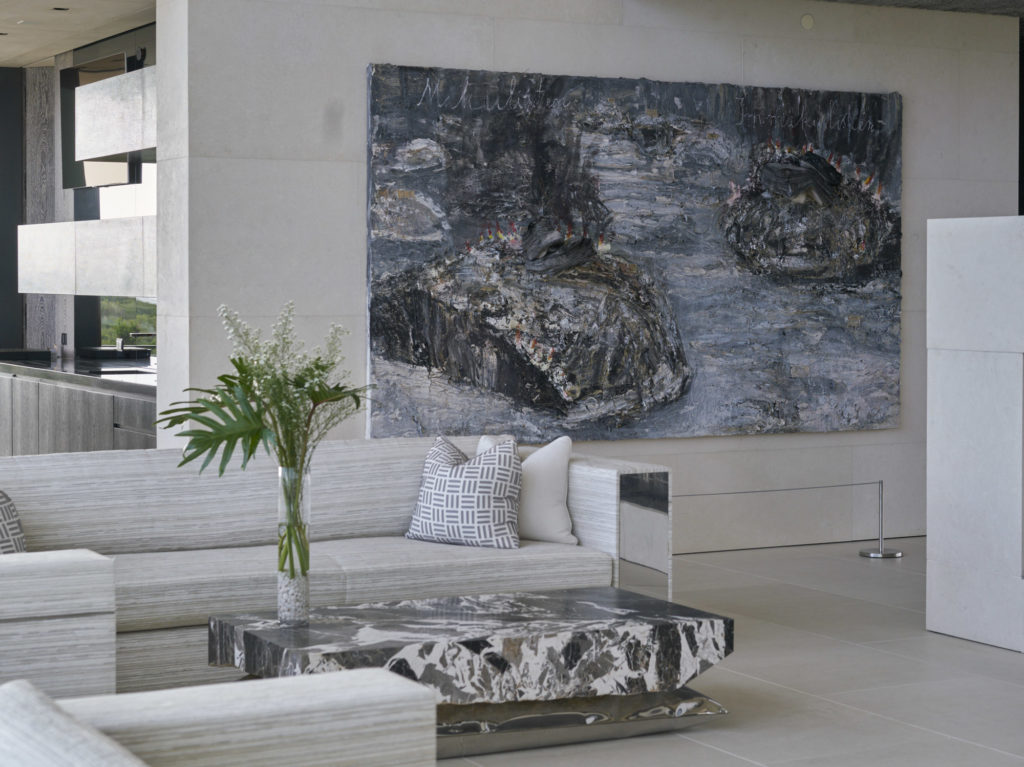
Anselm Kiefer, Makulisten, Immakulisten (2008). Courtesy of Ziel Feldman.
Do you have commissions planned for your new buildings?
We do, but we’re not quite ready to announce them yet. We’re definitely looking to create something that will evoke pleasant reactions and push the envelope. Any time art can make you smile, ask questions, or be thought-provoking, I think it’s accomplished an enormous amount.